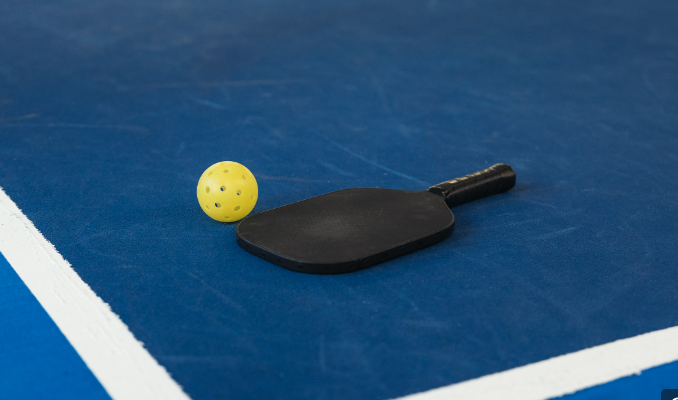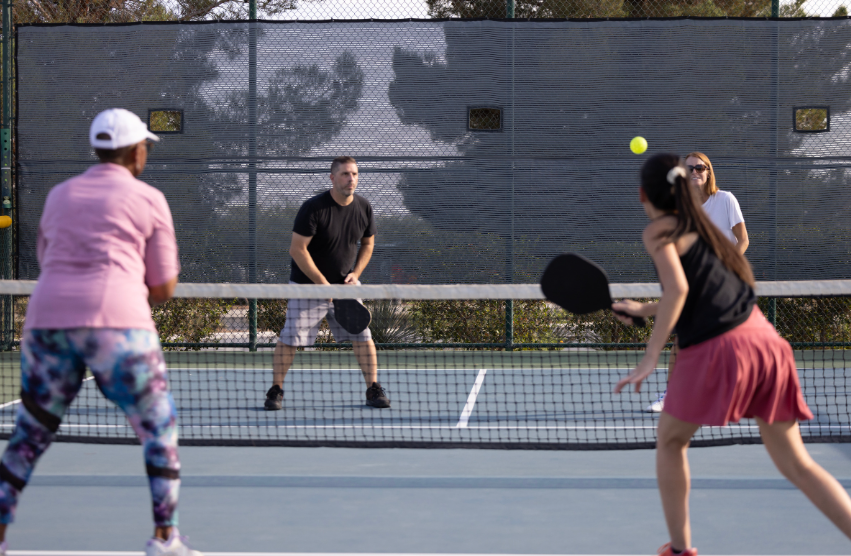Having a backyard pickleball court is a fantastic way to enjoy the sport at your convenience. Building your own court allows you to practice, play with friends and family, and improve your skills without leaving home. In this article, we will guide you through the process of building a backyard pickleball court. From selecting the right location and dimensions to preparing the surface and installing the necessary equipment, we’ll cover all the essential steps to help you create a functional and enjoyable pickleball court right in your own backyard.
- Selecting the Location and Checking Regulations (150 words): Choose a suitable location for your backyard pickleball court. Ensure you have enough space, considering both the playing area and safety buffers around the court. Check local regulations and any homeowner association guidelines that may apply to construction projects or sports facilities on your property. Verify if you need permits or approvals before proceeding.
- Determining Court Dimensions (150 words): Pickleball courts can be built in standard outdoor dimensions of 20 feet wide by 44 feet long. However, if space is limited, you can adjust the dimensions accordingly. Ensure you have ample clearance around the court to avoid obstructions. Mark the court boundaries using stakes and string to get a visual representation of the playing area.
- Clearing and Preparing the Site (150 words): Clear the chosen area of any vegetation, rocks, or debris that may interfere with court construction. Level the ground to ensure a smooth and even playing surface. Remove any obstacles, such as tree roots or large rocks, that may pose a hazard during play. Consider installing drainage systems if needed to prevent water accumulation on the court.
- Building the Sub-base (150 words): Construct a sturdy sub-base for your pickleball court to ensure stability and longevity. Excavate the playing area to a depth of around 4 to 6 inches. Install a geotextile fabric to prevent weed growth and stabilize the sub-base. Fill the excavated area with crushed rock or gravel, compacting it thoroughly with a plate compactor to create a solid and even surface.
- Installing the Playing Surface (150 words): Choose a suitable playing surface for your pickleball court. Options include asphalt, concrete, or an acrylic coating system. Consult with professionals or experienced builders to determine the best material for your needs and budget. Follow the manufacturer’s instructions for surface installation, ensuring proper curing and drying times.
- Marking the Court Boundaries and Lines (150 words): Once the playing surface is ready, mark the court boundaries and lines using durable paint or tape. Measure and mark the proper dimensions, including the baseline, sidelines, non-volley zone, and centerline. Use stencils or templates to ensure accuracy and consistency.
- Installing Net Posts and Net (150 words): Install permanent or removable net posts on each side of the court, following the standard pickleball net height of 36 inches at the center. Attach the net securely, ensuring it is taut and properly aligned.
- Adding Accessories and Amenities (150 words): Consider adding accessories and amenities to enhance your backyard pickleball court. Install lighting for evening play, fencing to enclose the court, and benches or seating areas for players and spectators. Provide storage for paddles, balls, and other equipment to keep them organized and readily accessible.
- Maintenance and Care (150 words): To ensure your backyard pickleball court remains in optimal condition, regular maintenance and care are essential. Sweep or blow off debris, leaves, and dirt from the playing surface regularly. Repair any cracks or damage promptly to prevent further deterioration. Keep the court clean and free from moss or mildew by washing it with a mild detergent and water. Inspect the net posts, net, and other accessories for any signs of wear or damage, replacing or repairing them as needed. Consider applying a fresh coat of paint to the court lines periodically to maintain visibility and clarity. By implementing proper maintenance practices, you can prolong the lifespan of your backyard pickleball court and enjoy optimal playing conditions.
- Creating a Spectator-Friendly Environment (150 words): If you anticipate having spectators while playing on your backyard pickleball court, consider creating a spectator-friendly environment. Install seating areas, such as benches or chairs, for comfortable viewing. Provide shade options, such as umbrellas or awnings, to shield spectators from the sun. Consider setting up a designated area with refreshments or a small outdoor lounge space for socializing and relaxation. Creating an inviting and comfortable space for spectators enhances the overall experience and encourages friends and family to join in the pickleball fun.
- Hosting Social Events and Tournaments (150 words): Once your backyard pickleball court is complete, take advantage of the space by hosting social events and friendly tournaments. Organize gatherings with fellow pickleball enthusiasts, friends, and neighbors to enjoy friendly matches and socialize. Consider hosting mini-tournaments or round-robin events to add a competitive element and foster a sense of community. Invite local pickleball clubs or organizations to participate and promote your backyard court as a venue for small-scale events. Hosting social events and tournaments not only provides opportunities for fun and friendly competition but also contributes to the growth of pickleball in your local community.
- Safety Considerations (150 words): Prioritize safety when building and using your backyard pickleball court. Ensure the playing surface is free from hazards, such as loose gravel or uneven areas, to prevent trips and falls. Place adequate lighting around the court to facilitate safe play during low-light conditions. Install boundary fences or barriers to prevent balls from leaving the playing area and potentially causing damage or injury. Educate players about proper footwear to minimize the risk of slipping or spraining ankles. Consider placing safety signage or rules near the court to promote responsible and safe play. By prioritizing safety, you can enjoy the sport with peace of mind and minimize the risk of accidents or injuries.
Conclusion (100 words): Building your own backyard pickleball court requires careful planning, construction, and ongoing maintenance. By following the steps to select a suitable location, prepare the site, construct a solid playing surface, and install necessary equipment, you can create a safe and enjoyable playing environment. Regular maintenance, creating a spectator-friendly space, hosting social events and tournaments, and prioritizing safety considerations will ensure that your backyard pickleball court becomes a hub for fun and friendly competition. Enjoy the convenience and excitement of playing pickleball right in your own backyard!






